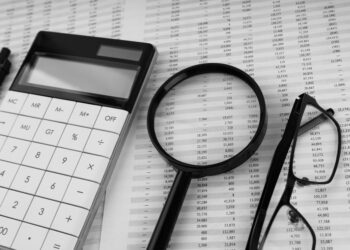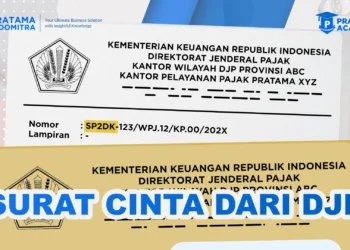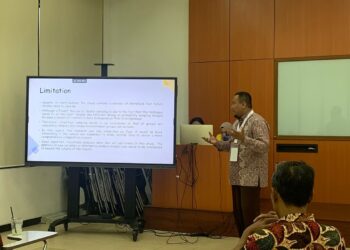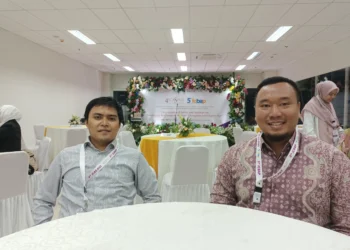As time goes by, many companies form business groups in order to expand or improve efficiency. Many companies within a business group also transact with each other. Actually, these transactions can be based on various considerations, for example, for convenience or economic reasons. However, it does not rule out the possibility that such intra-group transactions are also motivated by opportunistic behavior in the form of tax savings.
How does the tax saving happen? For example, there is PT A which has a subsidiary in Singapore, namely B Ltd. PT A then contracts with B Ltd and based on the contract, PT A must pay a bill to B Ltd of 100 USD. Through this transaction, PT A obtained a tax savings of 5 USD obtained from the following calculations…:
- 100 USD becomes a cost to reduce PT A’s taxable income so that it is not subject to corporate income tax at a rate of 22%. If there is no such cost, PT A’s income tax payable in Indonesia should be 22 USD (22% x 100 USD).
- Because it is the income of B Ltd, the income is taxed in Singapore at a rate of 17%, resulting in a tax payable in Singapore of 17 USD (17% x 100 USD).
The above transaction is an example of transfer pricing practice. In the context of taxation, the transfer pricing practice is detailed by the OECD (Organization for Economic Co-operation and Development) to cover the opportunistic behavior of taxpayers in seeking tax savings. In the OECD guidelines, there are three types of transfer pricing correction, namely 1) Primary adjustment, 2) Secondary adjustment, and 3) Corresponding Adjustment. In this article, the focus of discussion is on points 1 and 2 because these two corrections are often used by tax authorities in Indonesia.
The Concept of Primary and Secondary Adjustment in OECD Transfer Pricing Guidelines 2022
OECD defines primary adjustment and secondary adjustment in the glossary section of the OECD transfer pricing guidelines 2022, as follows…:
- Primary adjustment, an adjustment that a tax administration in a first jurisdiction makes to a
company’s taxable profits as a result of applying the arm’s length principle to
transactions involving an associated enterprise in a second tax jurisdiction. - Secondary adjustment, an adjustment that arises from imposing tax on a secondary transaction. Secondary transaction is a constructive transaction that some jurisdictions will assert under their domestic legislation after having proposed a primary adjustment in order to
make the actual allocation of profits consistent with the primary adjustment. Secondary transactions may take the form of constructive dividends, constructive equity contributions, or constructive loans.
Referring to the definition above, primary adjustment is a tax correction made by the local tax authority on a taxpayer’s income or expense as a result of the application of the arm’s length principle (ALP). ALP itself is simply defined as the arm’s length principle, meaning that transactions between related parties must be comparable in value to transactions to independent parties.
Meanwhile, a secondary adjustment is a correction that arises as a result of a primary adjustment. Based on this definition, if there is a primary adjustment, a taxpayer’s taxable income will increase (either due to a positive correction in income or a negative correction in expenses). In the secondary adjustment, the increase in income can be included as dividends, contributions to equity, or loans.
Implementation of Primary Adjustment and Secondary Adjustment in Indonesia
- Primary Adjustment
The regulation related to primary adjustment is implemented in Article 18, paragraph (3) of the Income Tax Law (Law No. 7/1983 until Law No. 7/2021). Through this Article, the government authorizes the Directorate General of Taxes (DGT) to redetermine the amount of income and reduction of Taxable Income for taxpayers who have special relationships in accordance with the ALP principle.
Then, Minister of Finance Regulation (PMK) No. 172/2023 again emphasizes the primary adjustment, especially in Article 36 paragraph (1) as quoted below.
“Article 36
(1) The Director General of Taxes is authorized to redetermine the amount of income and/or deduction to calculate the amount of taxable income through testing the compliance of the application of the Fairness and Usuality Principle.” (PMK 172/2023)
- Secondary Adjustment
PMK 172/2023 adopts the secondary adjustment arrangement in Article 37 paragraph (1) letter b as quoted below.
(1) In case:
Taxpayer implements the provisions as referred to in Article 3 paragraph (1), there is a difference between the value of Transaction Affected by Special Relationship that is not in accordance with the Fairness and Reasonableness Principle and the value of Transaction Affected by Special Relationship that is in accordance with the Fairness and Reasonableness Principle, the difference is an indirect profit distribution to the Affiliated Party which is treated as dividend.” (PMK 172/2023)
Referring to Article 37 paragraph (1) letter b of PMK 172/2023, if there is a difference or correction from DGT in connection with the application of ALP, the difference is considered as profit distribution or dividend to affiliated parties. What is the impact?
- If a Resident Taxpayer (WPDN) transacts with an affiliated party that is also a WPDN, there is no additional correction impact because dividends for WPDN Entities are non-object to Income Tax pursuant to Article 4 paragraph (3) letter f of Income Tax Law. That is, there is no tax withholding obligation on the dividend from the giver side.
- The impact of the correction will be felt by WPDN if it transacts with an affiliated party that is a Foreign Taxpayer (WPLN). The reason is because dividend payment is the object of Income Tax Article 26 withholding by WPDN. With the imposition of secondary adjustment, it means that there are dividends that should have been paid and withheld Income Tax Article 26 by WPDN. As a result of the secondary adjustment, DGT may issue an Underpayment Tax Assessment Letter (SKPKB) and WPDN must pay the outstanding Income Tax Article 26 along with the sanction.
In accordance with Article 37 paragraph (4) of PMK 172/2023, the secondary adjustment may not apply if:
- there is an addition and/or return of cash or cash equivalents amounting to the difference/correction; and/or
- The taxpayer approves the Transfer Price Determination by DGT.
Before PMK 172/2023 came into effect, the secondary adjustment was also regulated in Article 22 paragraph (8) of PMK 22/PMK.03/2020 which was revoked by PMK 172/2023.












